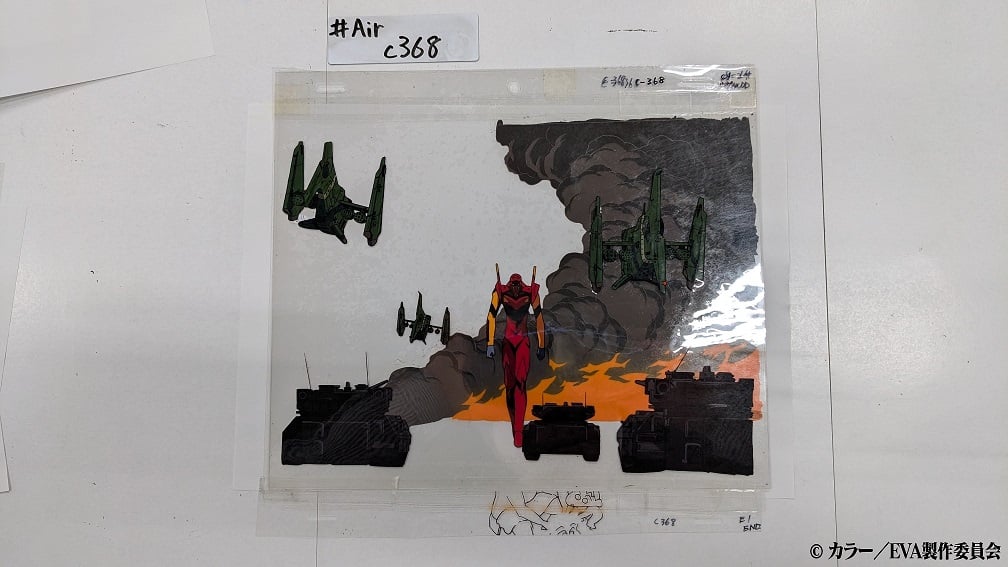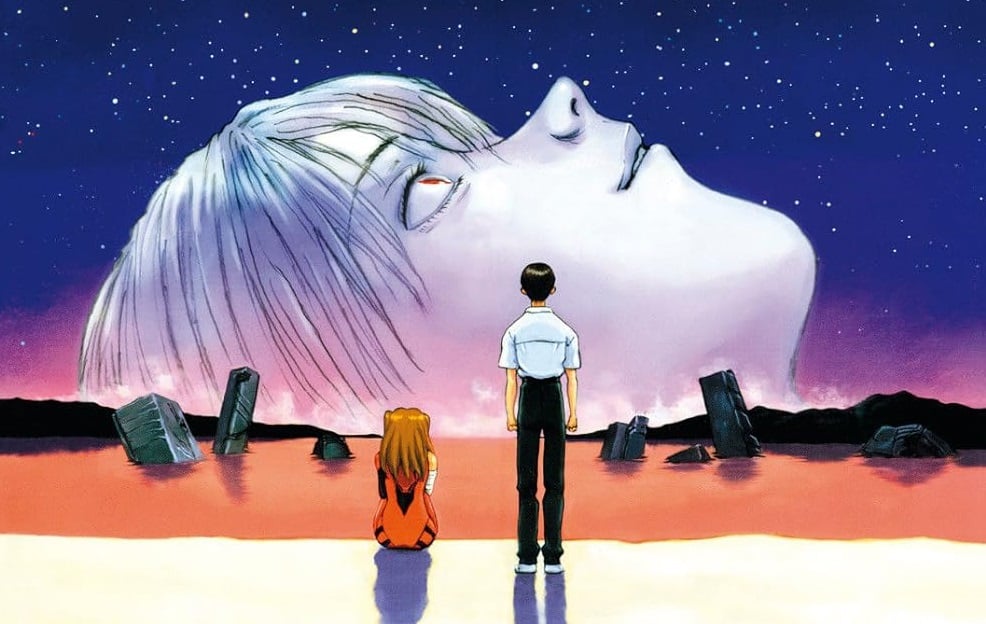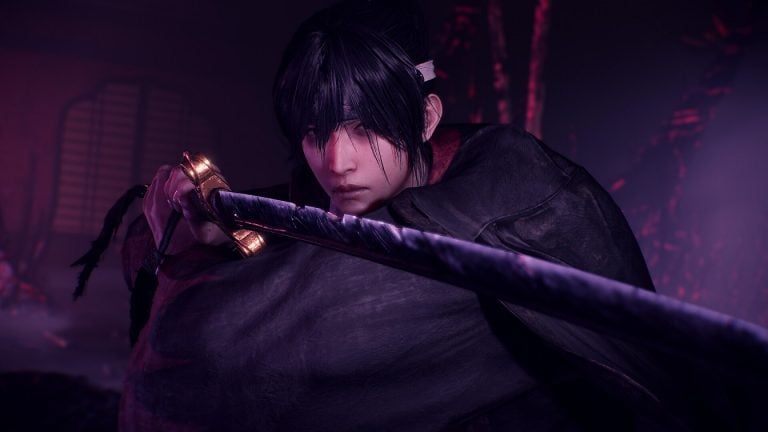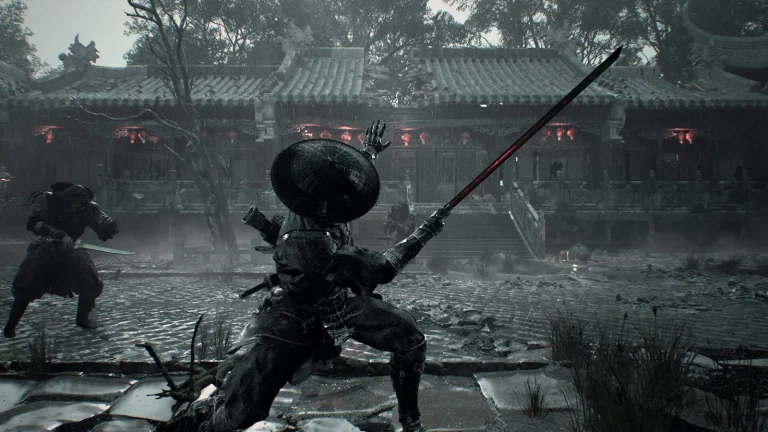This year, the cult-classic mecha anime Neon Genesis Evangelion is celebrating its 30th anniversary, and studio Khara has prepared numerous special events for the occasion, one of which is a re-run of all the theatrical releases of the show.
To hype up the upcoming screening of The End of Evangelion in Japan, one of Khara’s official accounts posted a few original cel frames made for the movie, alongside a small anecdote about its production by co-director Kazuya Tsurumaki. However, one of the cels ended up causing a stir online after X users noticed a rather surprising Easter egg hiding under it. Below the famous scene in which Asuka goes on her final rampage against the JSSDF, there’s a drawing depicting characters from the long-running slice of life comedy series Crayon Shin-chan.
Post translation: “In the theatrical adaptation, the whole production team changed, with the addition of numerous top-class animators who were working for Production I.G at the time and were specialists in drawing realistic action scenes. The quality of our key animations rose remarkably. I remember watching them make the compositions and looking forward to seeing the finalized keyframes” (Kazuya Tsurumaki)

Crayon Shin-chan and Evangelion do not have much in common, and the picture-book-esque visual style of the long-running comedy is not something that comes to mind when you think of Asuka’s violent and gory demise. So how did the rather unusual “collaboration” even happen? The answer lies in the specific techniques old-school animators used to cut costs back in the days.
Traditionally, anime was made with cels – transparent sheets of paper on which the animators painted all of the motions frame by frame. As you’d guess, making a 20-minute episode, or a full-length theatrical film, would require thousands of these paintings to be hand-produced and shot individually. But of course, all of the frames needed to be consistent within their respective scenes, and in order to keep the cel’s positions affixed and the drawings aligned, animators used tools called peg bars.
Upon seeing the Internet theorize about the mysterious appearance of Crayon Shin-chan in Evangelion, anime director Masaomi Ando, known for directing Gakkougurashi!, Kuzu no Honkai, and Kanata no Astra, decided to shed some light on the mystery. On his X account, Ando explained that the Crayon Shin-chan drawing was just an animation cel repurposed as a peg bar.
“Industry veterans probably all know this, but they were using scrap cels to make additional bottom peg bars. Before the digital age of anime, it was common for studios to use backsides of copy paper, but also cut up scrapped drawings from their other works to create makeshift paper peg bars. That’s because every studio out there was broke at the time. Now everything is done digitally, so the makeshift peg bars are pretty much a thing of the past…,” Ando commented.
While this clears most of the mystery, I bet you’re still wondering – But why was it Crayon Shin-chan in the first place? The End of Evangelion was a collaborative effort between studio Gainax and Production I.G, while Crayon Shin-chan is produced by Shin-Ei Animation. So how did the staff at Gainax and I.G. even get their hands on the Shin-chan scrap cels? Luckily, the Shin-chan and Evangelion fans over on X got us covered.
Ujima, “collector and archivist of Neon Genesis Evangelion” on X, took a deep dive into the history of the two anime to find out how the Shin-chan cels ended up in Evangelion. While the Evangelion cel in question is marked with “Air,” connotating that it is a scene in The End of Evangelion (which was first screened on July 19, 1997), Ujima suggests that this cut was actually from Neon Genesis Evangelion: Death & Rebirth, which originally released on March 15, 1997.
As spotted by fans of Crayon Shin-chan, the drawings which ended up as the peg bars for Evangelion cels are actually from episode 217 – “Dad Gives Himawari a Bath,” which aired on January 31, 1997.
This is where things get interesting. According to Seesaa Wiki’s Anime Database, two members of Production I.G. were actually working on both Crayon Shin-chan and The End of Evangelion around the same time. In the 217th episode of Shin-chan, Takayuki Yokose and Shinobu Tsuruga were credited as members of Production I.G. who worked on clean-up animations for the show. The information available on the Seesaa Wiki suggests that they only participated in two episodes of Crayon Shin-chan overall, while Production I.G. was credited several times in the series throughout 1997.
Tsuruga and Yokose also appear in the credits of The End of Evangelion as cleanup staff – which means that it was likely one of them who had the Crayon Shin-chan scrap animations on hand. While of course, there isn’t any official confirmation about whether and how this actually happened – what’s certain is all the sweat and tears that went into making hand-painted cel animations back in the day. Animators had to work on tight schedules, small budgets and make do with what they had in order to create masterpieces like The End of Evangelion, and the goofy-looking Shin-chan peg bar is a piece of that history.
Related articles:





